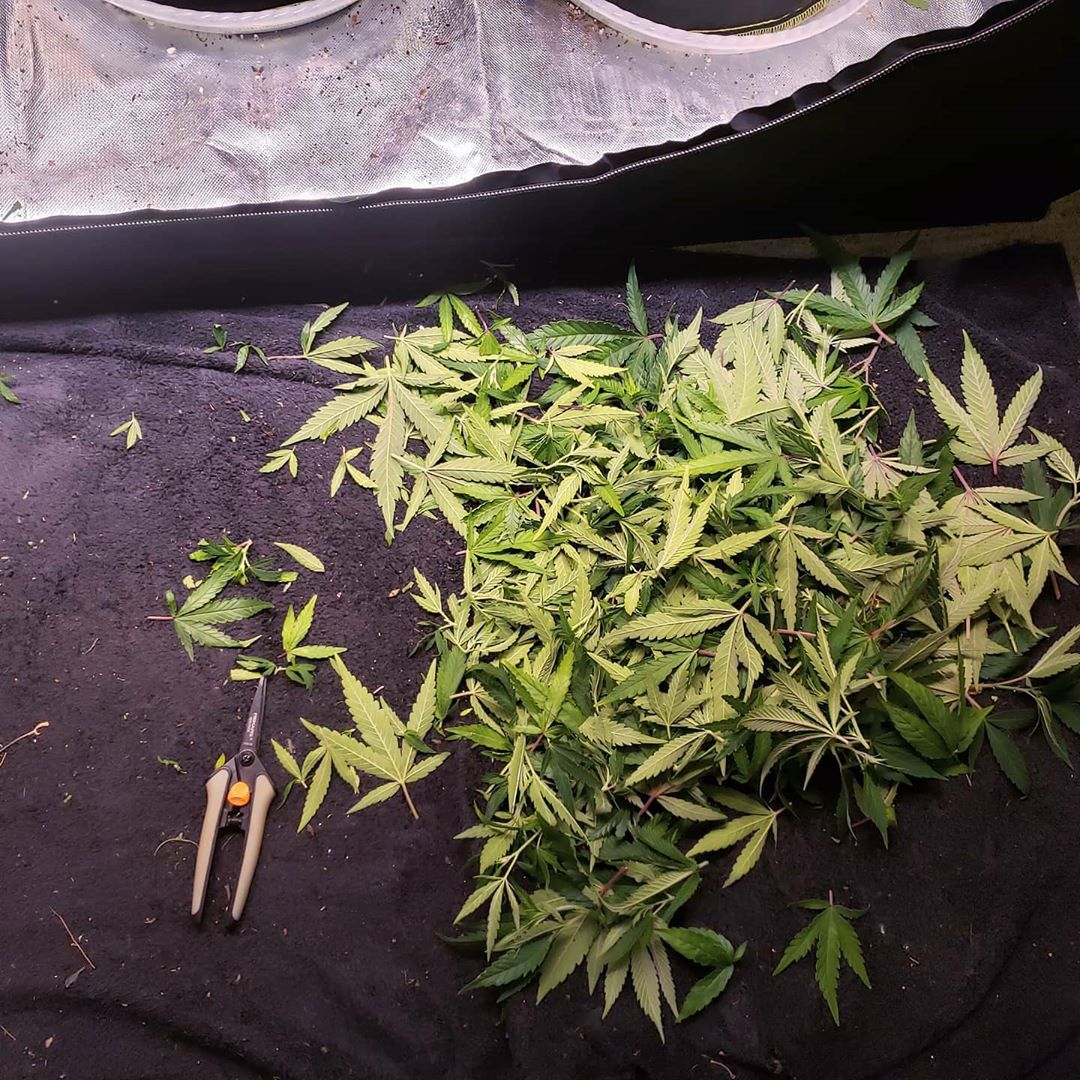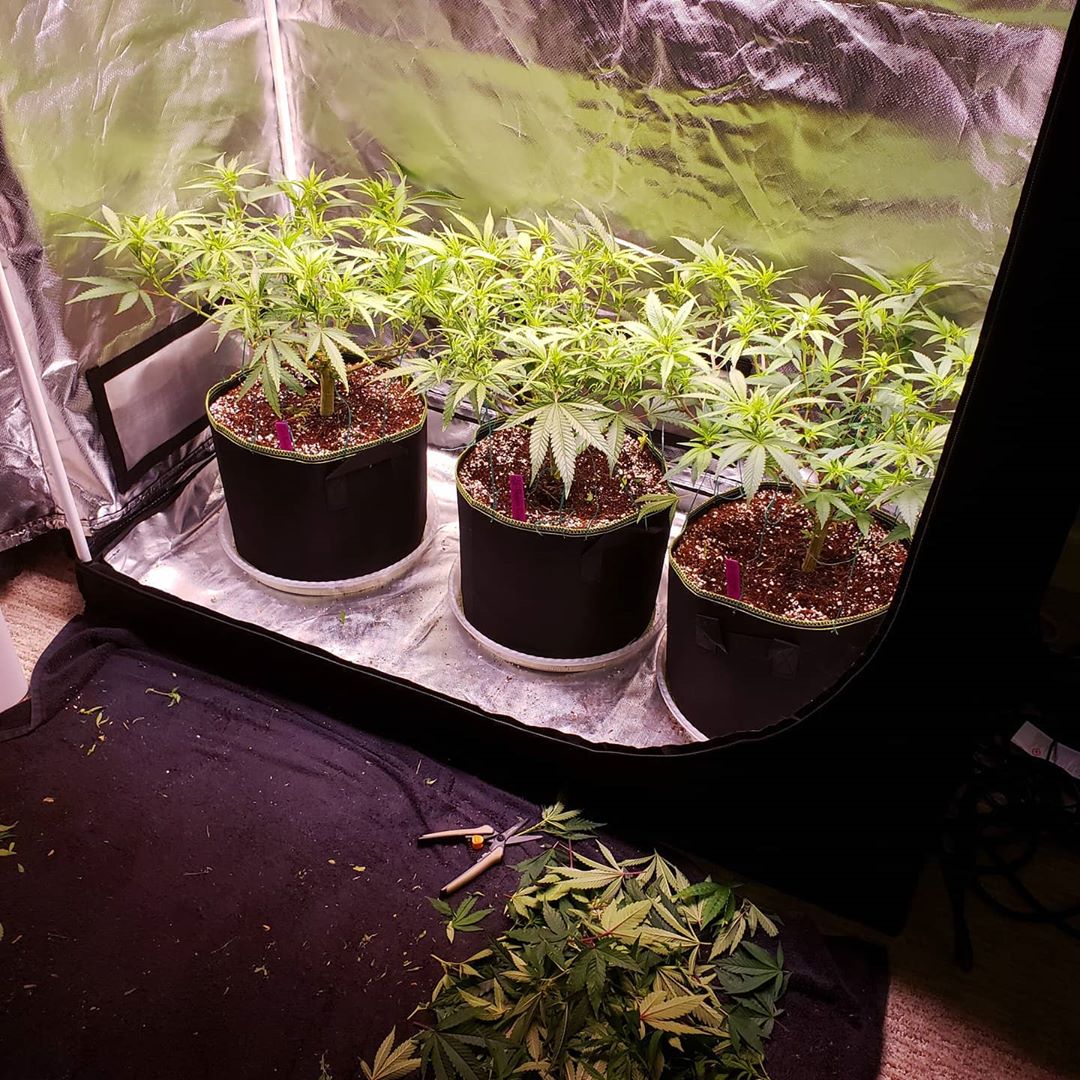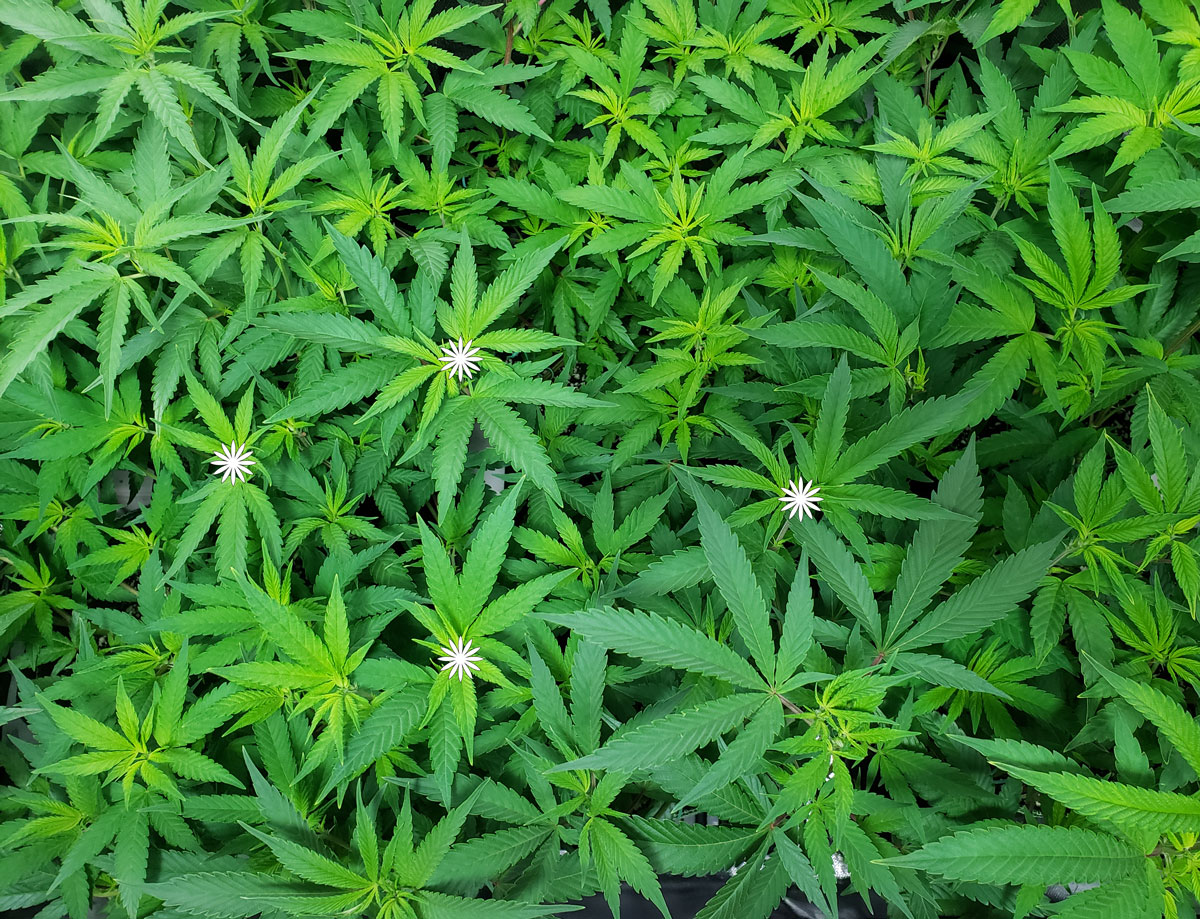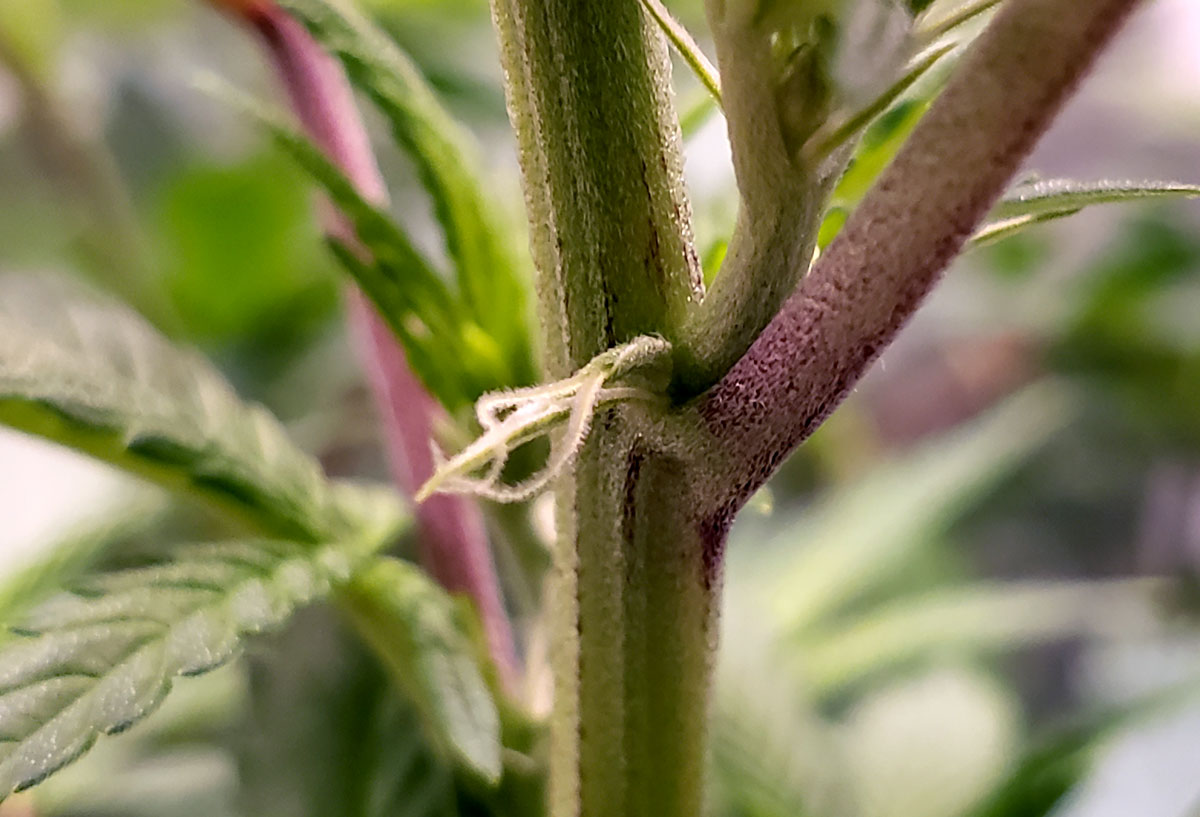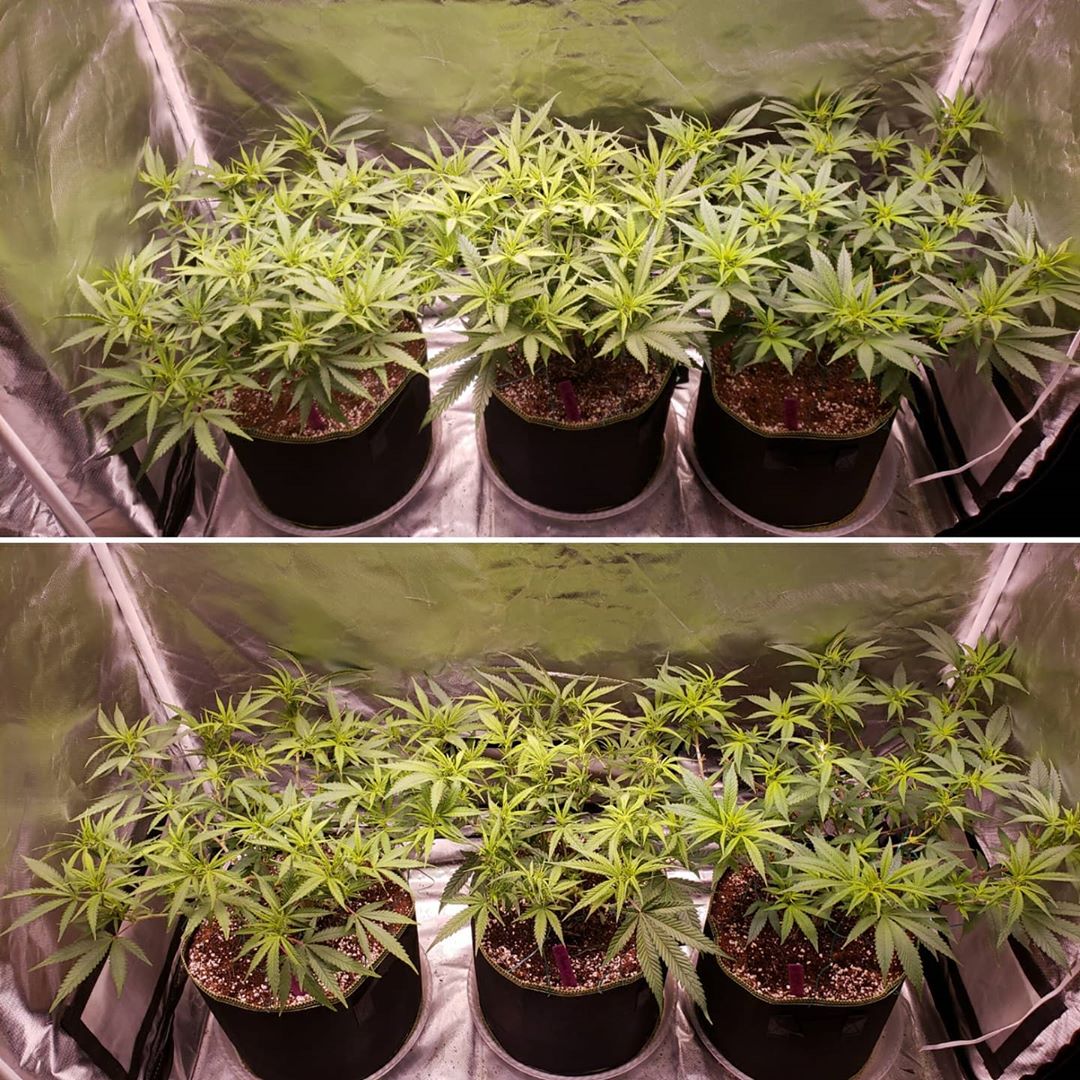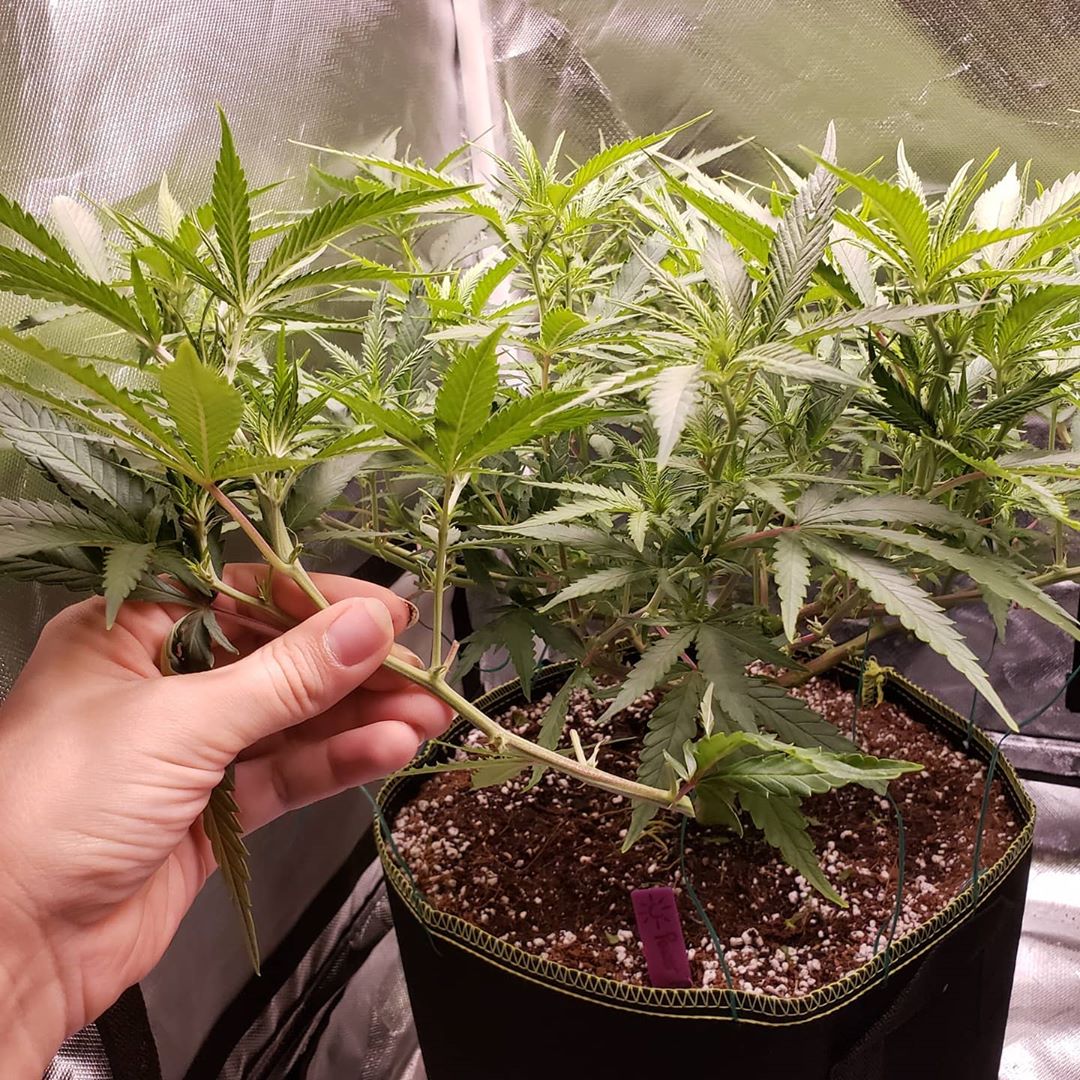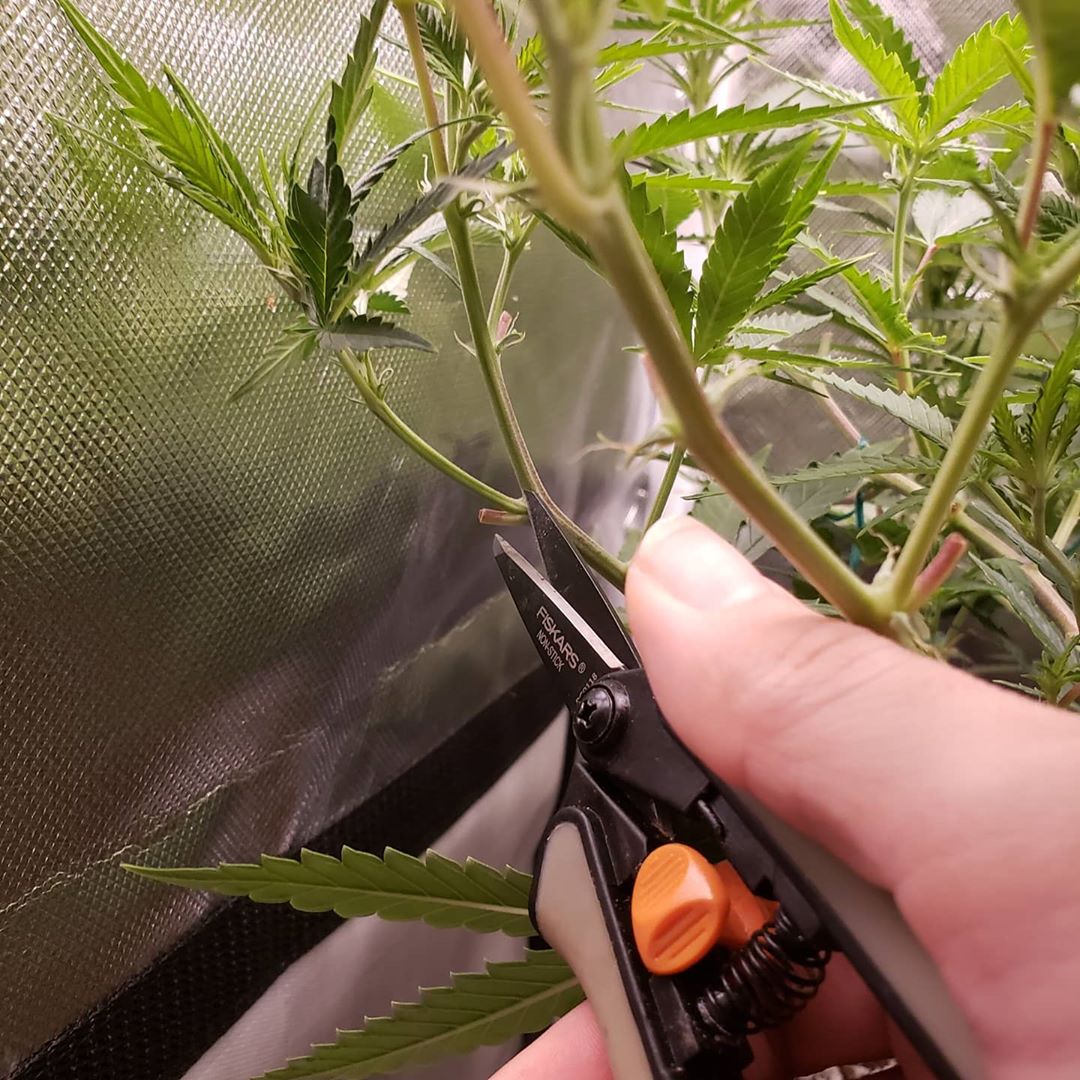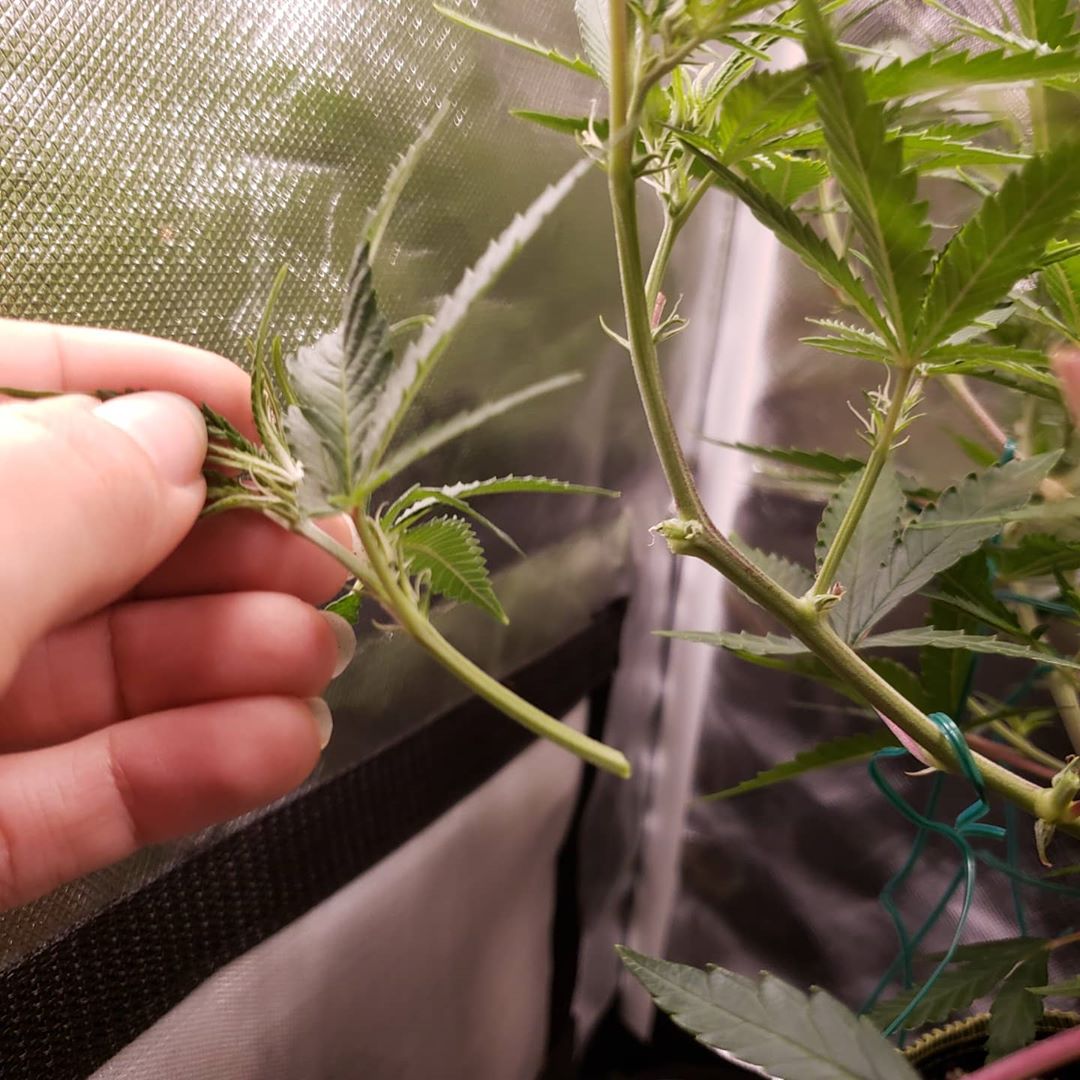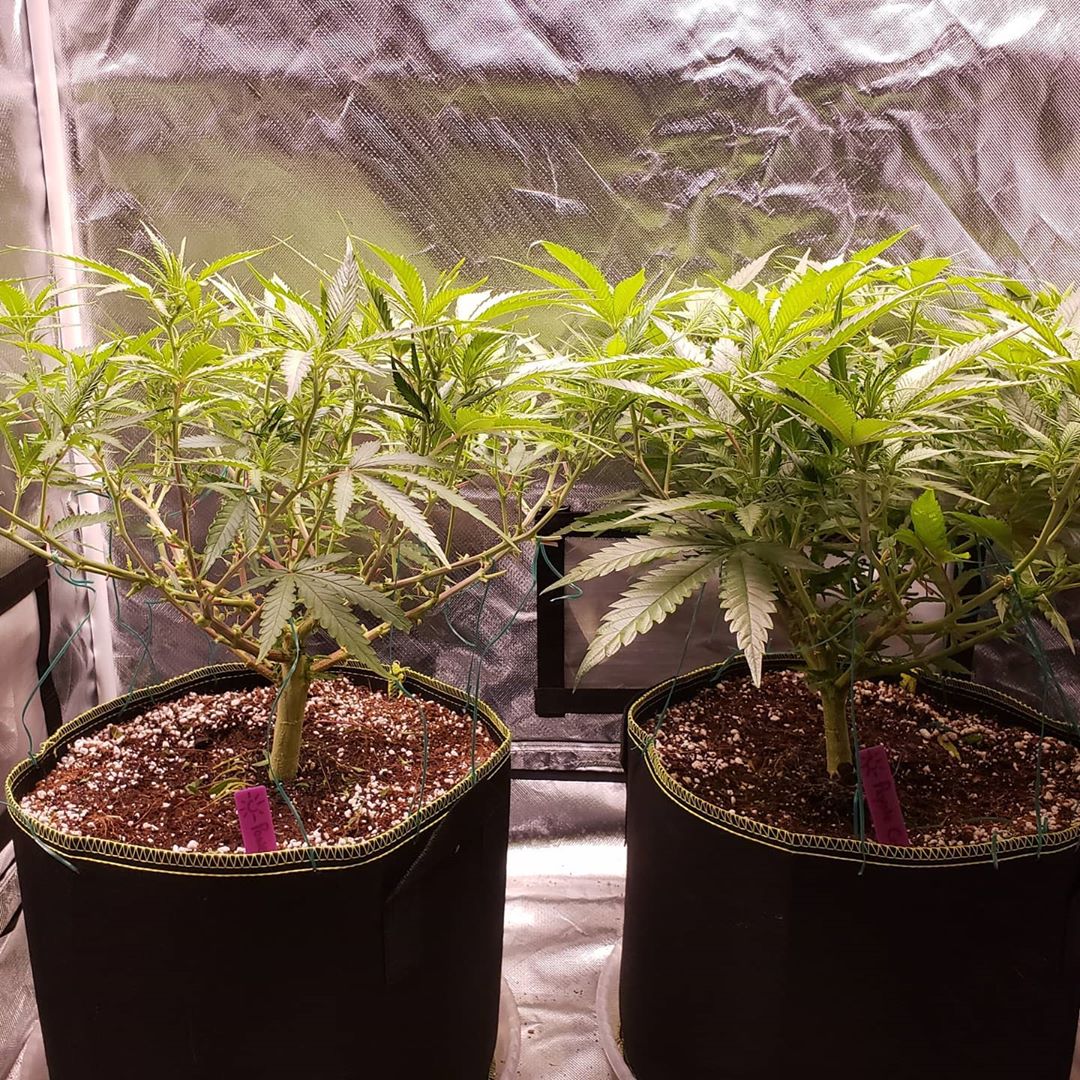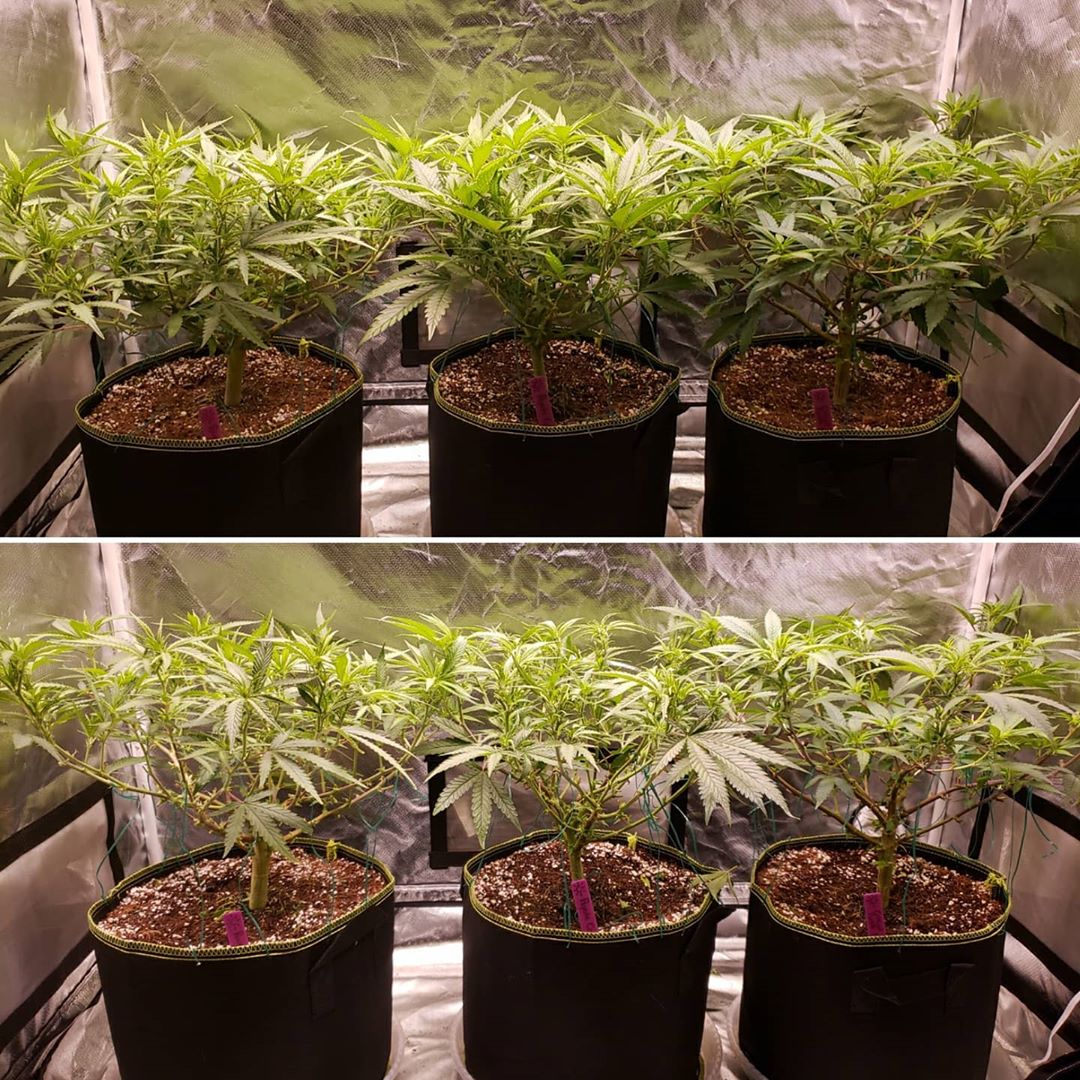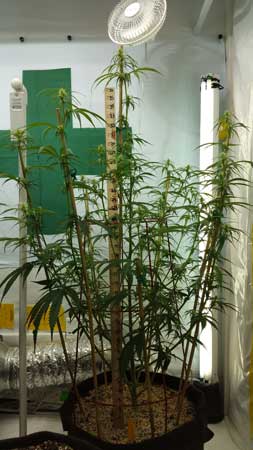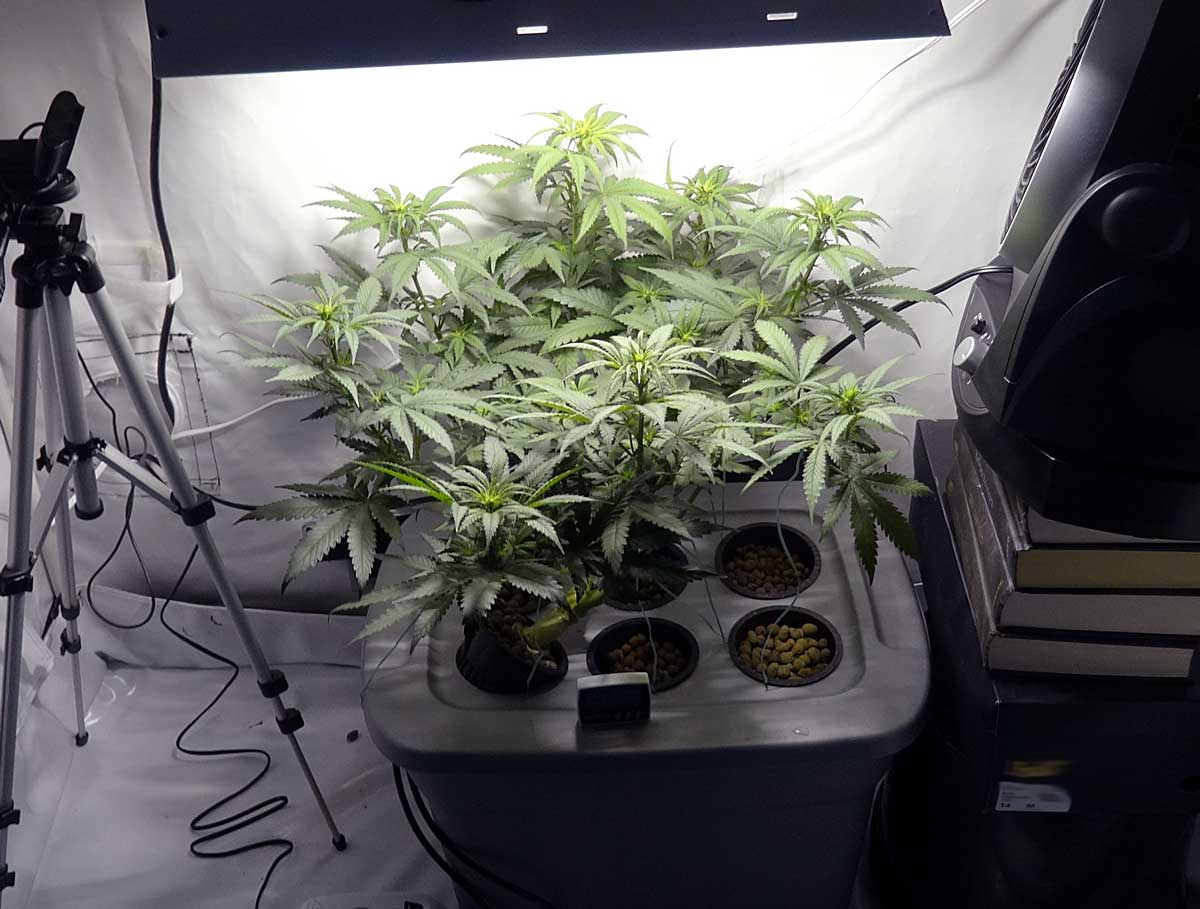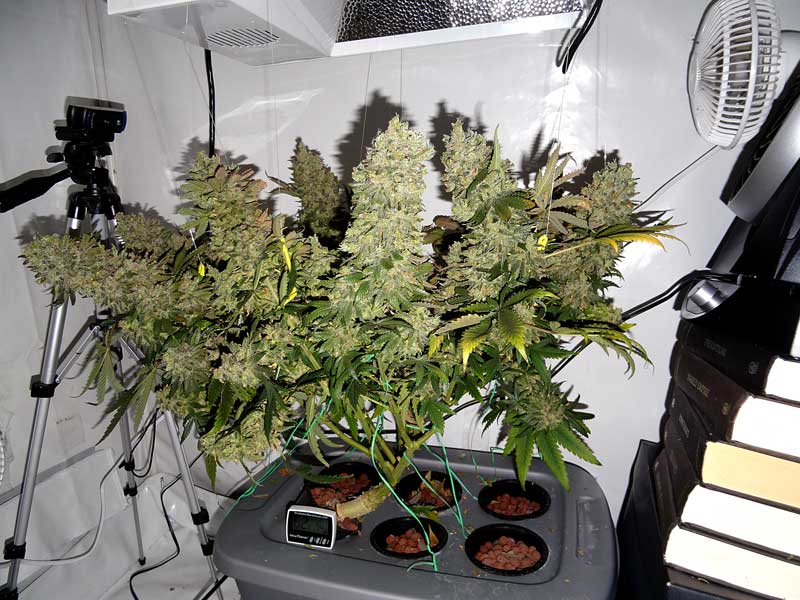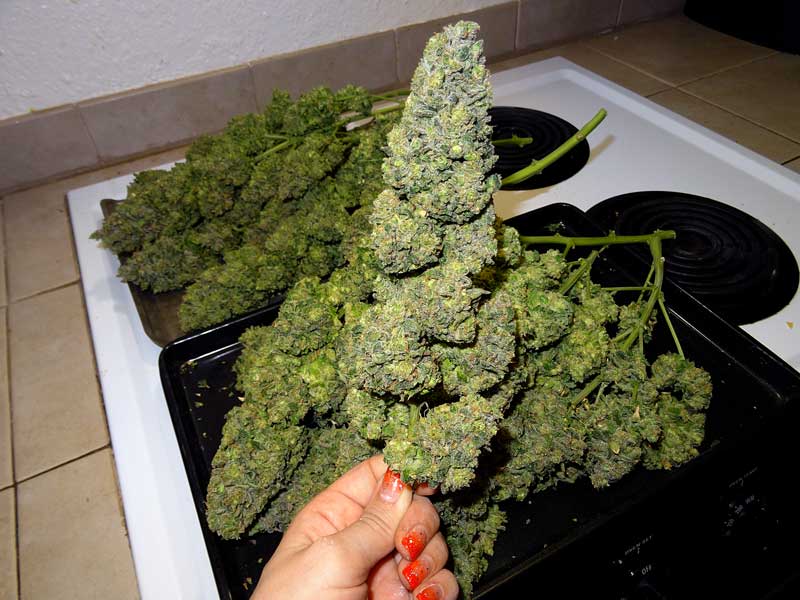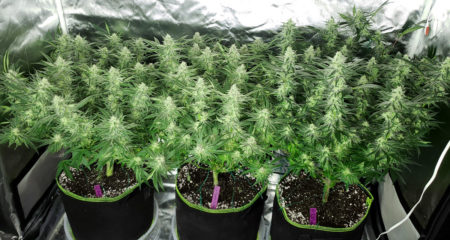by Nebula Haze
Cannabis defoliation… have you heard of it?
Defoliation is the process of strategically removing leaves to make cannabis grow in a more desirable way.
This week, I defoliated 3 plants in preparation for the flowering stage
Why do I defoliate? A few reasons.
- Higher-quality buds – Strategic defoliation in the early flowering stage produces fewer but higher-quality buds. Cannabis buds only fatten up when they get access to both light and air, and the biggest buds are usually located at the top of the plant. Lower and hidden buds are often airy wisps at harvest. Removing unnecessary leaves and hidden bud sites helps the plant focus on the best-quality buds at the top. When done properly, buds at harvest tend to be bigger, tighter, and more dense.
- Reduce chances of mold or bud rot – Some plants get so bushy that their leaves lay all over each other and cause wet spots. That was happening here. These plants were super leafy! Left unchecked, too-leafy plants are more likely to get powdery mildew or bud rot.
- Lower humidity – Leaves constantly release water vapor into the air, which raises the humidity. If it’s humid where you live (my outdoor humidity can get over 70% RH at times), removing leaves helps keep the humidity from climbing to unreasonable levels. High humidity in the second half of the flowering stage should be avoided because it can cause loose buds and increase the chance of mold or bud rot.
- Ease of trimming – Plants are way easier to trim after harvest. It doesn’t seem like a huge deal…until it’s time to trim!
Where are buds going to form?
The growing stems that will become the main bud sites look like stars from above. In the growing world, these main stems are often referred to as tops, mains, or colas (“cola” is the Spanish word for tail, and big cannabis buds look a bit like tails). Check out our glossary for other common growing terms.
In this picture, I marked a few main stems with white stars so you know where the biggest buds will grow. Can you spot the rest?
Defoliate at the beginning of the flowering stage…
The 3 featured plants were changed to a 12/12 light schedule a few days before these pictures to initiate the flowering stage. I can already see white hairs/pistils appearing on the future bud sites. A great time to defoliate!
Note: If you see bunches of balls instead of hairs, you’ve got a male plant that will not produce buds.
White hairs (pistils) are the first sign of female buds forming
Before & After – I removed big leaves on long stems to help expose bud sites and increase air circulation through the plant
Ideally, you want a good bud site every few inches at the top of the plant. Try to give each bud a bit of breathing room so they can develop as big as possible, but otherwise create a sea of buds to maximize the grow light.
This stem was never going to reach the top canopy and get direct light. It was also being blocked by a thicker, better-positioned stem. I made the executive decision to remove it so the plant could focus on the best stems.
Good bud sites are located at the top of thicker stems that reach the upper canopy. Even better if connected to the main trunk. This tiny stem touching the edge of the tent was never going to make big buds, but would have stolen energy from the main bud sites.
Goodbye, little stem
I also focused on “lollipopping”, which means removing growth on the bottom of the plant that would otherwise be in permanent shadow. I only do this once at the beginning of the flowering stage.
Left plant was defoliated and lollipopped while the right plant was untouched
Side view – Before vs After
I’m going to leave the plants alone for at least a few weeks (many growers defoliate again about 3 weeks after the first session).
Some plants (especially certain sativa strains) don’t really get leafy and defoliation is unnecessary. Other plants need defoliation because they get so bushy the leaves are covered in wet spots and buds are completely concealed.
It’s possible to stunt a plant if you take too many leaves. Leaves are what take in light and turn it into energy for the plant! There’s no need to defoliate a plant that’s not leafy like this one (except maybe a few leaves from the bottom).
Regardless of the plant, the main idea behind any cannabis plant training or defoliation technique is to expose many main bud sites to direct light and air.
Some defoliators take more or fewer leaves, and many growers take none at all. Cannabis plants are surprisingly flexible. The truth is, a big part of growing is personal preference because nearly all popular methods and defoliation schedules work well.
Let me walk you through an example of another plant that was defoliated so you can see how the plant responds.
This manifolded plant had just started flowering. It was lollipopped and every main stems defoliated. Notice how the main stems are at the top of the plant and exposed to direct light. That’s your main goal.
After that, I continued removing leaves that were lying on each other making wet spots or covering bud sites, but my main focus was giving basic plant care and a great environment
12 weeks later and buds are ready! Here is that plant at harvest
Every bud was fat and dense, with no airy or larfy buds. Easy to trim and great yields, too!
It’s possible to defoliate too much and stunt your plant, which can reduce yields, so be careful not to overdo it! If you want to maximize yields, only defoliate plants that are bushy.
Warning! Don’t defoliate if you are not using added nutrients. One setup that seems to do poorly with defoliation is a “no added nutrients” setup where the plants get all their nutrients from the soil. Each leaf stores nutrients for the plant, which means you’re forever taking those nutrients from the plant when you remove leaves. If you’re not replacing the nutrients in some way (such as with nutrient water or amendments), the plant may run into nutrient deficiencies later in the flowering stage.
Does defoliation increase yields overall?
Strategic defoliation causes plants to make fewer but bigger buds, yet it’s a point of contention in the growing world whether defoliation increases or reduces overall yields. Bud quality may be higher, but I’ve never found a direct test comparing yield weights.
I decided to get to the bottom of this mystery. My next grow will feature a controlled side-by-side experiment to test defoliation vs letting plants grow wild. I can’t wait!
In the meantime, here’s a picture of those plants I defoliated 4 weeks later, with about 4 weeks left to go until harvest. They’ve responded well!
Update: Nebula completed a side-by-side experiment to test defoliation vs. natural growth!
Check out the results here: Nebula’s Cannabis Defoliation Experiment – Side-by-side grow journal
For those who are interested in learning more about this setup:
- 2’x4’x6′ grow tent
- Mother Earth Coco + Perlite potting mix
- 5-gallon fabric pots
- Nutrients & Supplements: Flora trio + CaliMagic (learn more about this nutrient system)
- Check out my favorite LED grow lights for growing weed.
GrowWeedEasy.com has hundreds and hundreds of pages!
Check out some articles you may not have seen…
- Bugs, Mold, and Critters, Oh My! – Learn about common cannabis pests.
- Cool Growing Tools – Ever wonder if there’s some tool to help make things a little easier for growers? See a list of some of my favorite (mostly small and cheap) growing tools 🙂
- Nebula’s Manifold – Cannabis “Main-Lining” – Mainlining was invented by a superb grower named Nugbuckets. Manifolding is Nebula’s take on the technique and it works great!
- Cannabis Defoliation: How to Increase Yields by Removing Leaves – It’s common knowledge to defoliate now, but when we first did this article it caused an extremely famous grower to come after us!
- Super Cropping Marijuana: Simple Secret to Bigger Yields – It’s great for increasing yields, but even better for emergency plant training. Super cropping, what can’t you do?

